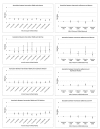Impact of a school-based water, sanitation, and hygiene intervention on school absence, diarrhea, respiratory infection, and soil-transmitted helminths: results from the WASH HELPS cluster-randomized trial
- PMID: 31360445
- PMCID: PMC6657003
- DOI: 10.7189/jogh.09.020402
Impact of a school-based water, sanitation, and hygiene intervention on school absence, diarrhea, respiratory infection, and soil-transmitted helminths: results from the WASH HELPS cluster-randomized trial
Abstract
Background: Water, sanitation, and hygiene (WASH) in schools is promoted by development agencies as a modality to improve school attendance by reducing illness. Despite biological plausibility, the few rigorous studies that have assessed the effect of WASH in schools (WinS) interventions on pupil health and school attendance have reported mixed impacts. We evaluated the impact of the Laos Basic Education, Water, Sanitation and Hygiene Programme - a comprehensive WinS project implemented by UNICEF Lao People's Democratic Republic (Lao PDR) in 492 primary schools nationwide between 2013 and 2017 - on pupil education and health.
Methods: From 2014-2017, we conducted a cluster-randomized trial among 100 randomly selected primary schools lacking functional WASH facilities in Saravane Province, Lao PDR. Schools were randomly assigned to either the intervention (n = 50) or comparison (n = 50) arm. Intervention schools received a school water supply, sanitation facilities, handwashing facilities, drinking water filters, and behavior change education and promotion. Comparison schools received the intervention after research activities ended. At unannounced visits every six to eight weeks, enumerators recorded pupils' roll-call absence, enrollment, attrition, progression to the next grade, and reported illness (diarrhea, respiratory infection, conjunctivitis), and conducted structured observations to measure intervention fidelity and adherence. Stool samples were collected annually prior to de-worming and analyzed for soil-transmitted helminth (STH) infection. In addition to our primary intention-to-treat analysis, we conducted secondary analyses to quantify the role of intervention fidelity and adherence on project impacts.
Results: We found no impact of the WinS intervention on any primary (pupil absence) or secondary (enrollment, dropout, grade progression, diarrhea, respiratory infection, conjunctivitis, STH infection) impacts. Even among schools with the highest levels of fidelity and adherence, impact of the intervention on absence and health was minimal.
Conclusions: While WinS may create an important enabling environment, WinS interventions alone and as currently delivered may not be sufficient to independently impact pupil education and health. Our results are consistent with other recent evaluations of WinS projects showing limited or mixed effects of WinS.
Conflict of interest statement
Competing interests: All authors have completed the ICMJE uniform disclosure form at http://www.icmje.org/coi_disclosure.pdf (available upon request from the corresponding author) and declare no conflicts of interest.
Figures
References
-
- Global Burden of Disease Child and Adolescent Health Collaboration. Kassebaum N, Kyu HH, Zoeckler L, Olsen HE, Thomas K, et al. Child and adolescent health from 1990 to 2015: findings from the Global Burden of Diseases, Injuries, and Risk Factors 2015 Study. JAMA Pediatr. 2017;171:573-92. 10.1001/jamapediatrics.2017.0250 - DOI - PMC - PubMed
-
- Montresor A, Crompton D, Gyorkos T, Savioli L. Helminth control in school-age children. Geneva: World Health Organization; 2002.
Publication types
MeSH terms
Substances
Grants and funding
LinkOut - more resources
Full Text Sources
Medical
Miscellaneous


